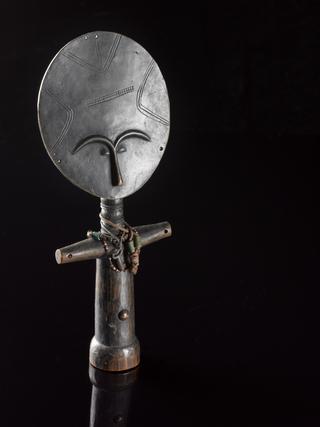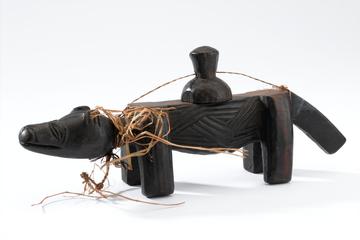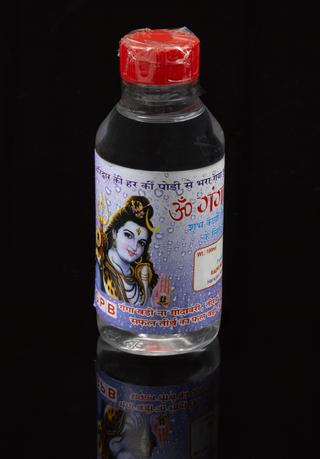


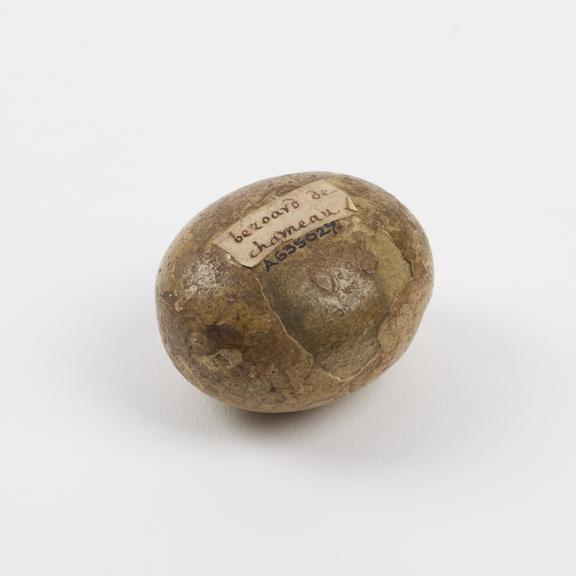
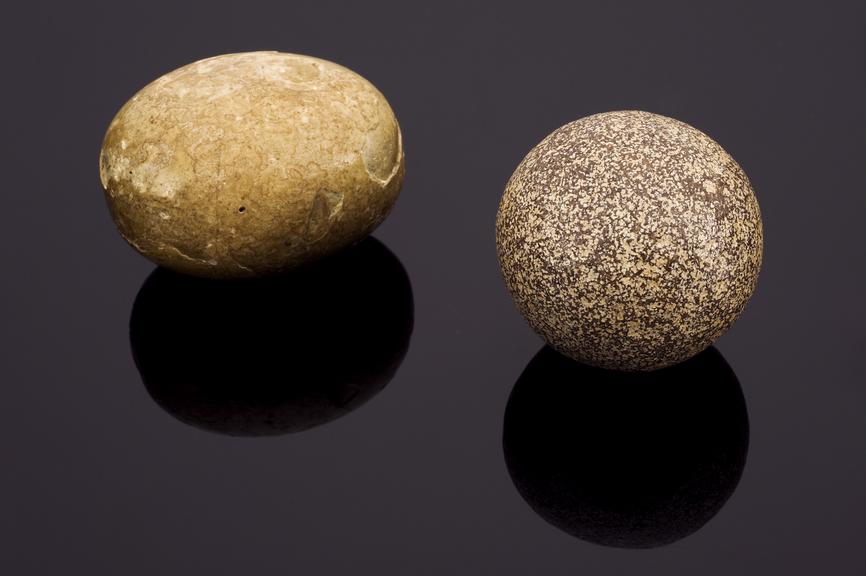
Pale green oval bezoar stone from a camel, possibly Algerian, 1601-1800
Bezoar stones are found in the stomachs and intestines of animals and humans. They are made from things that cannot be digested in the body, such as hair, and fibres from fruit and vegetables. The bezoar stone on the left is from the stomach of a camel that probably lived in Algeria. It was believed that bezoar stones could counteract any poison. They were also used to treat fevers and prevent miscarriages. Bezoar stones are still used in some medical traditions as part of treatments for illness. It is shown here with a bezoar stone from an unknown animal (A635026).
Details
- Category:
- Ethnography and Folk Medicine
- Collection:
- Sir Henry Wellcome's Museum Collection
- Object Number:
- A635027
- Materials:
- calculus
- Measurements:
-
overall: 32 mm x 54 mm x 45 mm, 0.05kg
- type:
- bezoar stone
